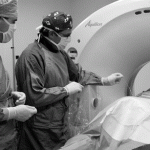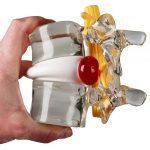Nearly 80% of the population sustains an episode of low back pain (LBP) once during their lifetime. Due to its high prevalence and significant contribution to disability, LBP incurs an annual cost exceeding $100 billion in the USA. Thus, an effective understanding of Lumbar Disc Herniation (LDH), its origins, and how to appropriately treat LDH is of substantial importance.
Causes
- Genetic Predisposition
- Dehydration
- Axial Overloading
Genetic Predisposition
A myriad of genes are involved in separate processes which predispose to LDH. It is estimated that the condition has approximately 75% heredity origin
Dehydration
Dehydration is known to contribute to the pathogenesis of degenerative disc disease. Although a specific genetic polymorphism has not been associated with LDH, aquaporins have been implicated.
Axial Overloading
Not all disc herniation occurs in the context of degenerative disease. A subset of patients with LDH lack evidence of severe degenerative disc including proteoglycan and water loss in the NP. In these cases, herniation occurs as a result of spinal overloading. A recent study found that static overloading in particular, as compared to physiological loading and dynamic overloading, put the disc at risk for posterior herniation. The authors suggest that this may be the mechanism for the increased prevalence of lower back pain and herniation in younger individuals that live a sedentary and seated lifestyle.

Sign and Symptoms
The primary signs and symptoms of LDH are radicular pain, sensory abnormalities, and weakness in the distribution of one or more lumbosacral nerve roots. Focal paresis, restricted trunk flexion, and increases in leg pain with straining, coughing, and sneezing are also indicative. Patients frequently report increased pain when sitting, which is known to increase disc pressure by nearly 40%.





